Workshop of René-Antoine Houasse, (Paris, c. 1645 - Paris, 1710)
Late 17th century French school, c. 1690
Oil on canvas, h. 100 cm, w. 80 cm
Important 17th century giltwood frame richly carved with flowers and foliage.
Framed: h .128 cm, w. 108 cm
Our ceremonial equestrian portrait represents the king aged around thirty. Louis XIV appears in it as an army leader, dominating a battle scene in the background. He holds the baton of command, a sign of his authority, and is mounted on a white horse called "soup de lait", rearing, a symbol of victory. The king is sumptuously dressed in a jerkin embroidered with gold thread, a black hat with a white plume, and a lace tie. His sword, stirrups and horse harness are decorated with precious stones and diamonds, testifying to the wealth and power of the rider. His black boots with red soles and heels are adorned with gold spurs.
The horse is there to enhance the power and grandeur of the rider, depicted as a conquering king, who is also painted on a slightly larger scale than the horse in order to emphasize his majesty.
Our work is a reduced-format version of the painting by Réné-Antoine Houasse and kept at the Arras Museum (h. 280 cm, 230 cm).
In 1674 Charles le Brun received the commission for a portrait of Louis XIV on horseback in front of a battlefield. Le Brun provided a drawing and Houasse produced the full-size cardboard kept in the Department of Graphic Arts at the Louvre Museum. We know that five versions of the large painting are documented in the inventory of the Garde-Meuble. The most famous is the one exhibited at the Salon de Mars in Versailles. (h. 255 cm, l. 200 cm). Other large formats are in Perpignan, Besançon, at the Château de Vaux-le-Vicomte and a version is at the Museum of Fine Arts in Lisbon, brought to Portugal by the French ambassador, Oppède. The Arras version, for which Houasse was paid the most, is said to be the closest to the first version. The other large-format versions are said to be studio works executed under the direction of the master, even if the one in Versailles is very accomplished. There are also several small-format studio versions. The best known is that of the Lastic collection presented at the exhibition of the Musée de la Chasse et de la Nature (see the exhibition catalogue Georges Lastic (1927-1988). Le cabinet d'un amateur. Collecteur et gardien, Paris, Musée de la Chasse et de la Nature, Senlis, Musée de la Vénerie and Clermont-Ferrand, Musée d'art Roger-Quilliot, 2011-2012, no. 15, reproduced in colour). Other versions are kept at Troyes, Musée d'art d'archéologie et de sciences naturelles, Chantilly musée Condé, Dijon, Musée des beaux-arts.
This equestrian portrait was one of the most beautiful effigies of the sovereign and its success led to the execution of several copies between 1680 and 1690.
In the composition, which derives from the great Titian-Velazquez tradition, Louis XIV is not in armour but is richly dressed in a ceremonial costume. The very cold colouring and the design of the garment embroidered with gold thread are of great delicacy. Houasse innovates by representing the king on a grey horse taking the form of a unicorn thanks to the position of the baton of command. This new idea of the horse reinforces the divine and glorious character of the king, victor of the Flanders campaign in 1667, even if the battlefield, here, is not identifiable.
René-Antoine Houasse, (Paris, c. 1645 - Paris, 1710)
This painter was one of the closest collaborators of Charles Le Brun, who employed him from 1670 at the Tuileries and especially at Versailles, where he played an important role in the decoration of the grand apartment (decor preserved, but repainted): he worked first in the current Salon de Mars, then, around 1680, in the Salon de Vénus and that of Abondance, the latter distinguished by its taste for illusionism. From 1688, he painted a series of mythological paintings for the Grand Trianon. Received into the Academy in 1673, he was, from 1699 to 1705, director of the French Academy in Rome. We also owe him this Equestrian Portrait of Louis XIV which is one of the most beautiful effigies of the sovereign and which was copied several times. His style, inspired by neoclassicalism, is especially valuable for the refinement of a particular gray-blue color. The Louvre holds several works by the artist.























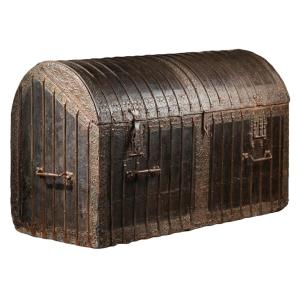

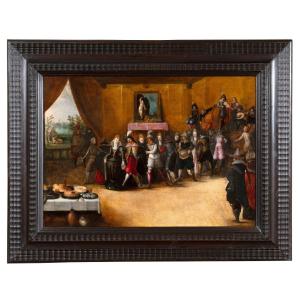



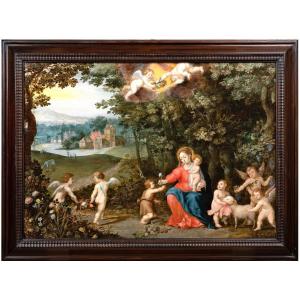
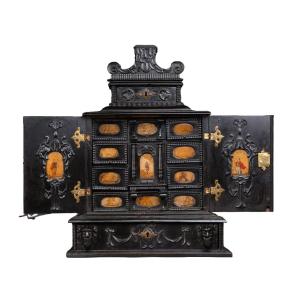




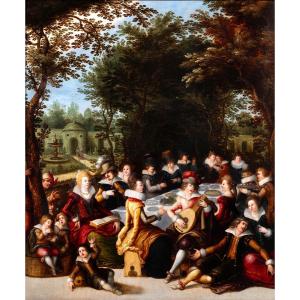

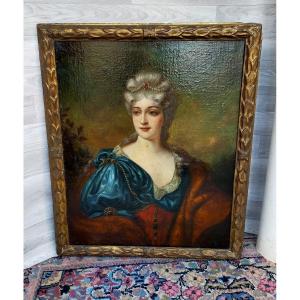







 Le Magazine de PROANTIC
Le Magazine de PROANTIC TRÉSORS Magazine
TRÉSORS Magazine Rivista Artiquariato
Rivista Artiquariato